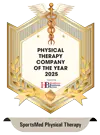Possibly the most common of knee injures is a ligament tear or strain. The knee has four main ligaments – Anterior Cruciate Ligament (ACL), Posterior Cruciate Ligament (PCL), Medial Collateral Ligament (MCL), and Lateral Collateral Ligament (LCL). These ligaments provide stability for the knee joint and help keep its bones in place. An ACL injury is very common, especially in athletes due to hardcore training.
Injuries to ligaments, sprains, and are categorized as follows:
- Grade 1 – Little damage, mostly due to being over stretched. Still has ability to provide stability.
- Grade 2 – Overstretched and partially torn ligament.
- Grade 3 – Complete tear of the ligament and it is no longer able to provide stability.
In this article we will cover the ACL (a cruciate ligament) and the effect an injury has on the knee joint. Cruciate ligaments prevent forward and backward movement of the knee. They are found on the inside of the knee and cross each other to form an ‘x’. The ACL is in front and connects the front of the tibia (shin bone) to the back of the femur (thigh bone) and the PCL in the back connecting the back of the tibia to the front of the femur.
The ACL
The ACL is the strongest of the knee’s ligaments and injuries are quite common. Its job is to prevent the femur or tibia from sliding too far forward.
Injuries to the ACL occur with hyperextension (forceful straightening) of the knee or excessive internal (inward) rotation of the knee. Commonly a blow to the knee or stop and twist motion are the culprit, hence why ACL injuries are common with sports such as football, skiing, basketball, soccer or gymnastics. Non-sports related injures can occur from repeated trauma to the knee (as in landing with a straight leg) or car accidents. Usually those who tear or partially tear their ACL will hear a popping sound followed by swelling. It is not unlikely that ACL injuries occur in the presence of other soft tissue injures. In fact, a condition called the “Unhappy Triad’ is when injury occurs to the ACL, MCL, and Meniscus.
[divider height=”1″ width=”250px” bg_color=”#34ceda” margin_top=”20″ margin_bottom=”20″ alignment=”center” display_icon=”off” /]
In need of ACL Rehabilitation? Schedule an Appointment Today!
If you have any questions, or want a consultation with a professional, feel free to call, or schedule an appointment online at any of our Bergen County or Passaic County offices in New Jersey. Choose from Glen Rock, Franklin Lakes, Fair Lawn, Ho-ho-kus/Ridgewood, and/or Clifton – we make it possible for you to visit any of our offices at your convenience.
[divider height=”1″ width=”250px” bg_color=”#34ceda” margin_top=”20″ margin_bottom=”20″ alignment=”center” display_icon=”off” /]
Symptoms of ACL Injury
- Pain
- Stiffness
- Swelling
- Inability to move side to side
- Knee giving out
- Difficulty in certain ranges of motion (ROM)
Treatment for ACL Injury
Treatment will depend of the severity of the injury and if other soft tissues are affected. For Grade 3 sprains, surgery is the only way to fully fix the ACL, since it is a total tear. It is important to note that the ACL is not just simply reattached, it is reconstructed using a graft from a tendon (usually the patellar or hamstring tendon). A torn ACL may not always require surgery and one can continue without it by doing physical therapy. Always get the opinion of a medical professional before choosing the best route for you.
An ACL injury will take stability away from the knee and treatment should focus on strengthening the muscles around the knee, specifically the quadriceps (front thigh) and hamstrings (back thigh).
It is important to note that posterior (back) leg weakness has been shown to decrease knee stability and possibly lead to ACL injuries in non-athletes. This is becoming more and more common because a majority of the population are seated for most of their day.
Exercises that can help after the ACL Injury:
Glute Bridges
[youtubeVideo id=”4MVTuweMkqM” height=”250″ /]
Hamstring Curls
[youtubeVideo id=”F488k67BTNo” height=”250″ /]
Leg Extensions
[youtubeVideo id=”n_z6-gZuCgI” height=”250″ /]
NOTE: Always do exercises in the ROM that does not cause pain. Seek the help a physical therapist(like us) to help you determine how much to do.
[footer title=”Do you, or someone you know need ACL rehabilitation? We can help you get on the Road to Recovery with a simple consultation.”]



